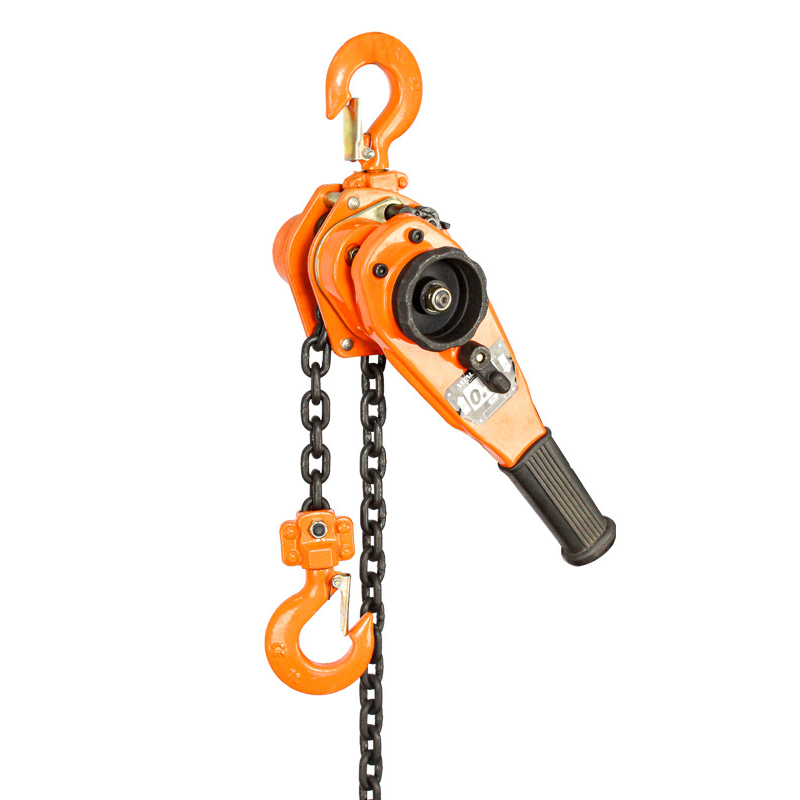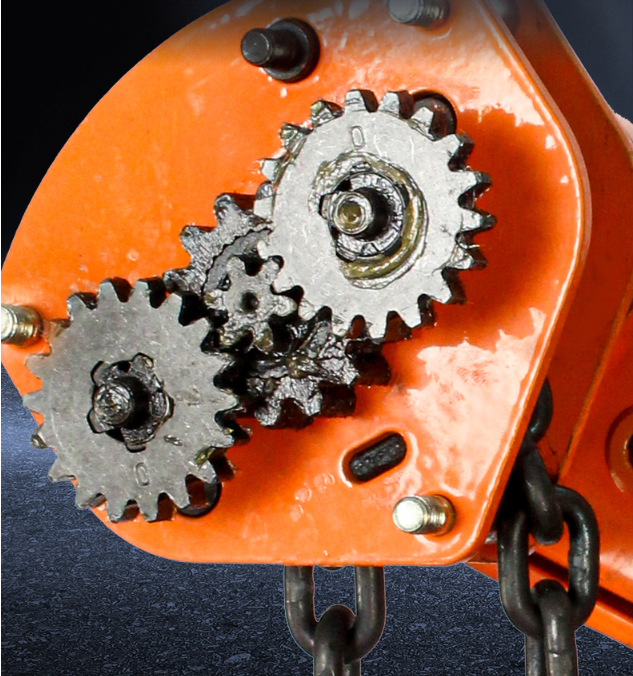Our staff will contact you within 12 hours, You can also contact us through the following ways:
Contact US WhatsApp: +8618766656705
- Email: [email protected]
- Tel: +8618766656705
- Web: https://www.toponechain.com/
A 1.5 t lever hoist excels in tight spaces where chain blocks cannot hang free and electric hoists weigh too much. Crews use it to tension pipe spools, align wind-tower flanges, pull conveyor frames straight, and load gear into service trucks. This guide covers the nameplate data you must read, the right chain grade, handle pull limits, rigging angles, and inspection steps—so you set each hoist safely and finish the job on time.
Verify these fields match the lift plan before use:
Field on Plate | Typical Value | Why It Matters |
Rated capacity (WLL) | 1 500 kg | Confirms load limit |
Standard | EN 13157 or ASME B30.21 | Ensures test method |
Load chain grade | G80 or G100 | Lifting only, not tie-down |
Load chain Ø | 8 mm (single fall) | Governs hook size |
Lever pull @ WLL | ≤ 250 N | Ergonomics and safety |
Serial / year | Unique | Traceability for audits |
No plate or unreadable plate? Tag the hoist out of service.

A single-fall 8 mm G80 chain handles 1.5 t with plenty of headroom. Match hardware via two simple rules:
Top hook throat ≥ 4 × chain Ø (≈ 32 mm)
Bottom hook throat ≥ 4 × chain Ø
Check stamp “8” or “10” every 8–10 links; reject any chain stamped “70” (cargo-tie-down grade).
Manufacturers design lever hoists around human strength:
Capacity | Chain Ø (mm) | Handle Length (mm) | Pull Force @ WLL (N) |
0.75 t | 6 | 300 | 200 |
1.5 t | 8 | 410 | 250 |
3 t | 10 | 410–450 | 340 |
Pull straight on the handle; never use a cheater bar. If the load feels heavier than the spec pull force, weigh it or upsize the hoist.

Lever hoists tolerate slight side tension, yet chain must run mostly straight through the lift wheel to avoid jump or jam. Use a snatch block or web sling redirect when pulling around corners. Keep the included angle between chain segments under 10°.
The ratchet-and-pawl brake holds the load automatically when the handle rests. Service steps:
1. Open the cover; keep parts in order.
2. Degrease friction discs; replace if thickness < OEM minimum.
3. Inspect pawl teeth; sharp profiles mean safe engagement.
4. Torque the clutch nut to the spec in the manual; this sets overload slip.
Always perform a functional brake test: lift 50 mm, release the handle, the hook must hold with zero creep for at least one minute.
Run these five checks in under three minutes:
1. Nameplate: WLL, serial, standard, and chain grade legible.
2. Chain: no twist, no nicks, pitch even; lubricated lightly.
3. Hooks: latch closes; throat shows no spread or cracks.
4. Handle: no bends, grip intact, selector shifts smoothly between up/neutral/down.
5. Brake test: small test load, no creep.
Document pass/fail in the shift log.
Task | Interval | Notes |
Clean & oil load chain | Monthly (more in dust) | Use OEM oil |
Open brake pack | Six-monthly | Replace discs if glazed |
Check bearings & gears | Annually | Grease per spec |
Proof test | Annually or after overload | 1.5 × WLL, three cycles |
Follow the OEM’s torque chart during reassembly; incorrect torque changes brake slip load.
Exposure | Recommended Chain | Reason |
Indoor dry shop | G80 black oxide | Simple upkeep |
Coastal site | G80 zinc-nickel | Resists salt fog |
Food plant wash-down | Stainless 304 G80 | Hygiene & rust-proof |
Hot work (≤ 200 °C) | G80 black oxide | Heat-resistant alloy |
Confirm hook and brake parts match the chosen chain finish.
Symptom | Cause | Fix |
Load slips | Worn friction discs | Replace discs, set torque |
Chain binds | Bent guide or kinked chain | Replace guide or chain |
Handle hard to shift | Damaged selector pawl | Replace pawl, clean debris |
Hook latch sticks | Dirt at pivot | Clean, lube, change spring |
Run functional tests after every repair.
Conclusion
Read the nameplate, pick the correct Grade 80 (or higher) chain, respect handle pull limits, keep the load line straight, run daily and periodic checks, and the 1.5 t lever hoist will deliver safe, precise lifts shift after shift—contact TOPONE CHAIN today for certified lever hoists, spare brake kits, and ready stock in every lift height.